Description
Hichiriki is a seven-holed, double-reed woodwind instrument made of bamboo. It is approximately 18 cm long (7 inches). The first three holes are assigned to the left hand’s fingers and the last four to the right hand. There are also two thumb-holes on the back on the instrument.
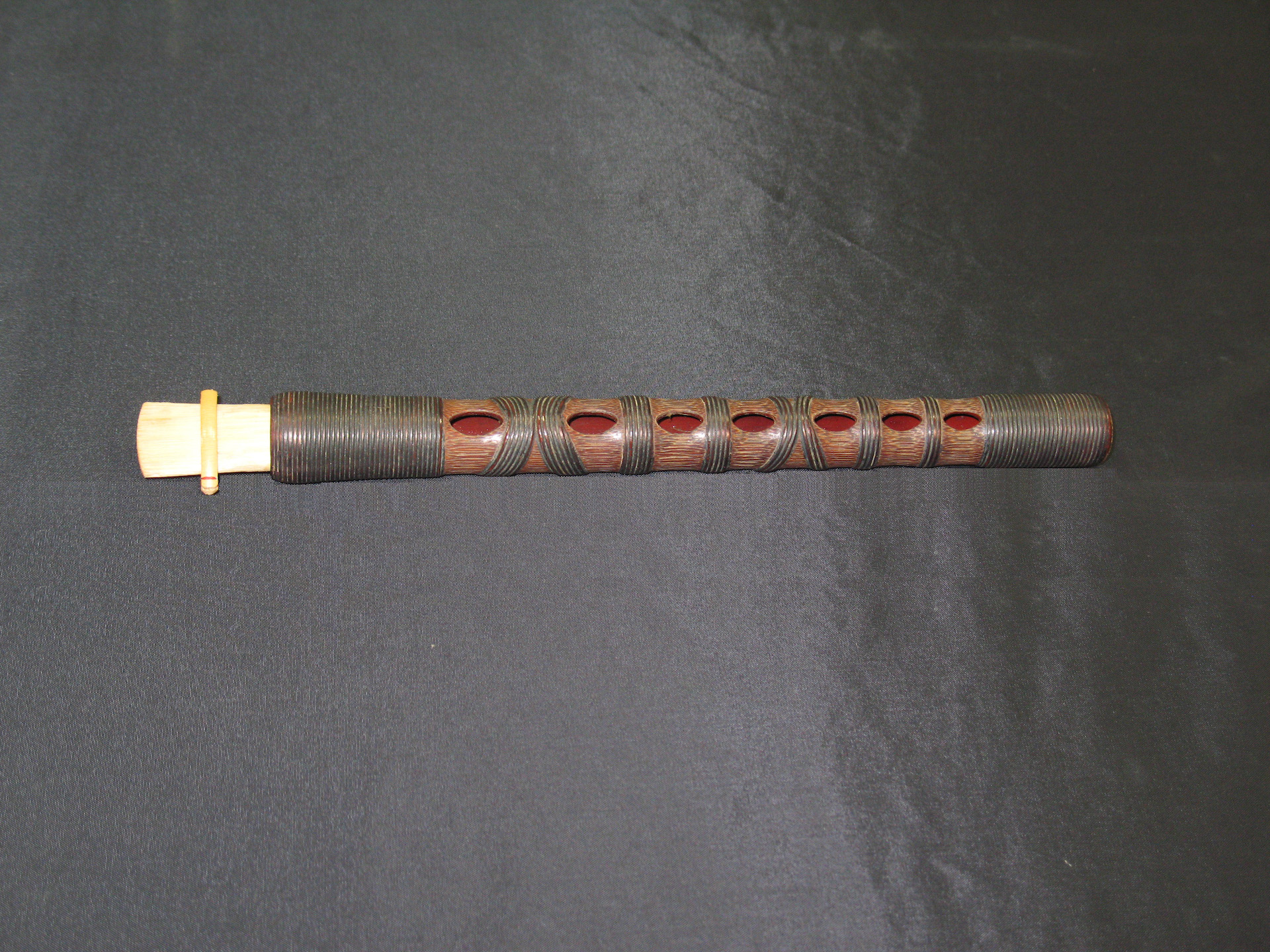 Hichiriki – front
Hichiriki – front
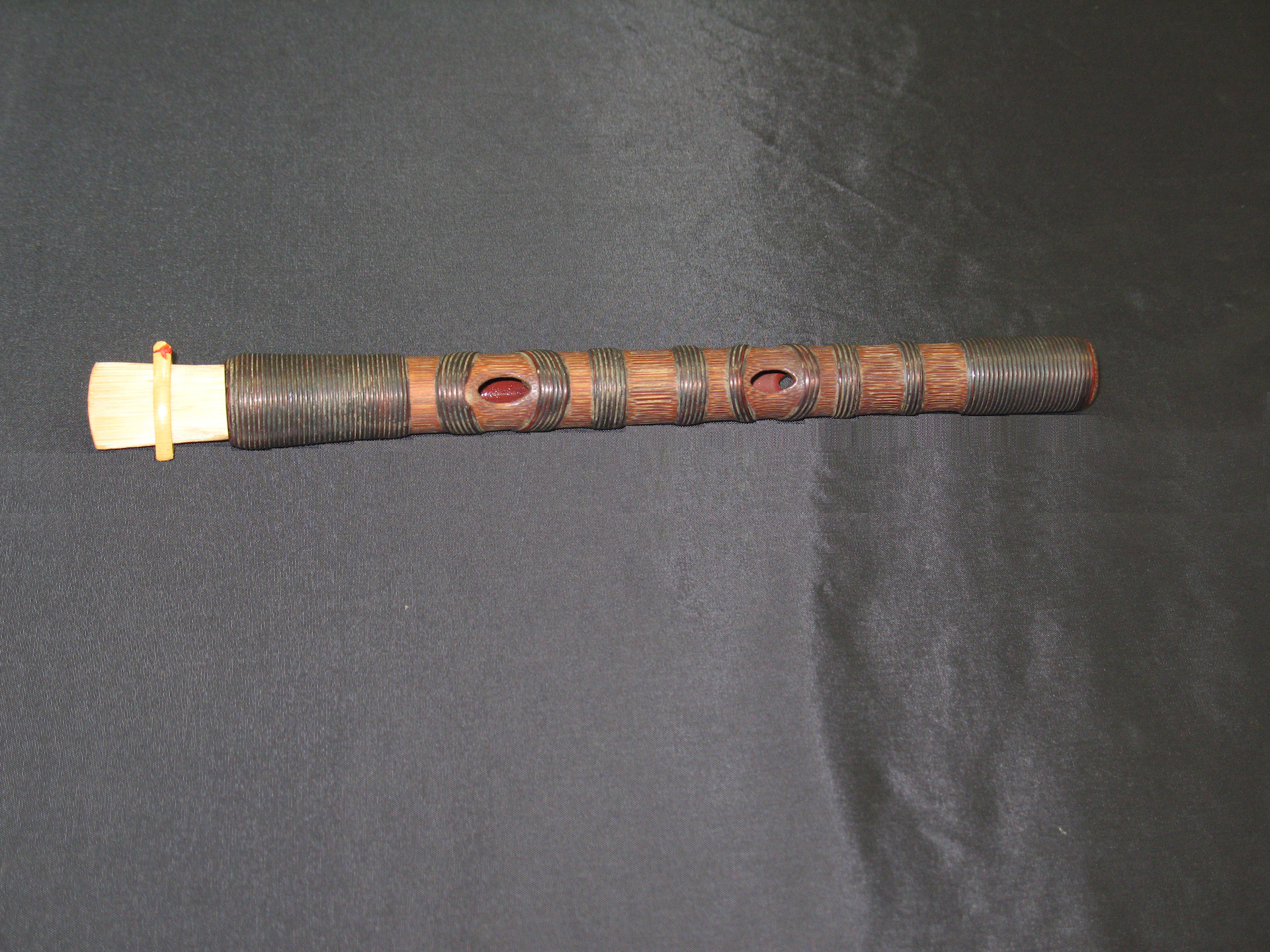 Hichiriki – back
Hichiriki – back
Figure 1
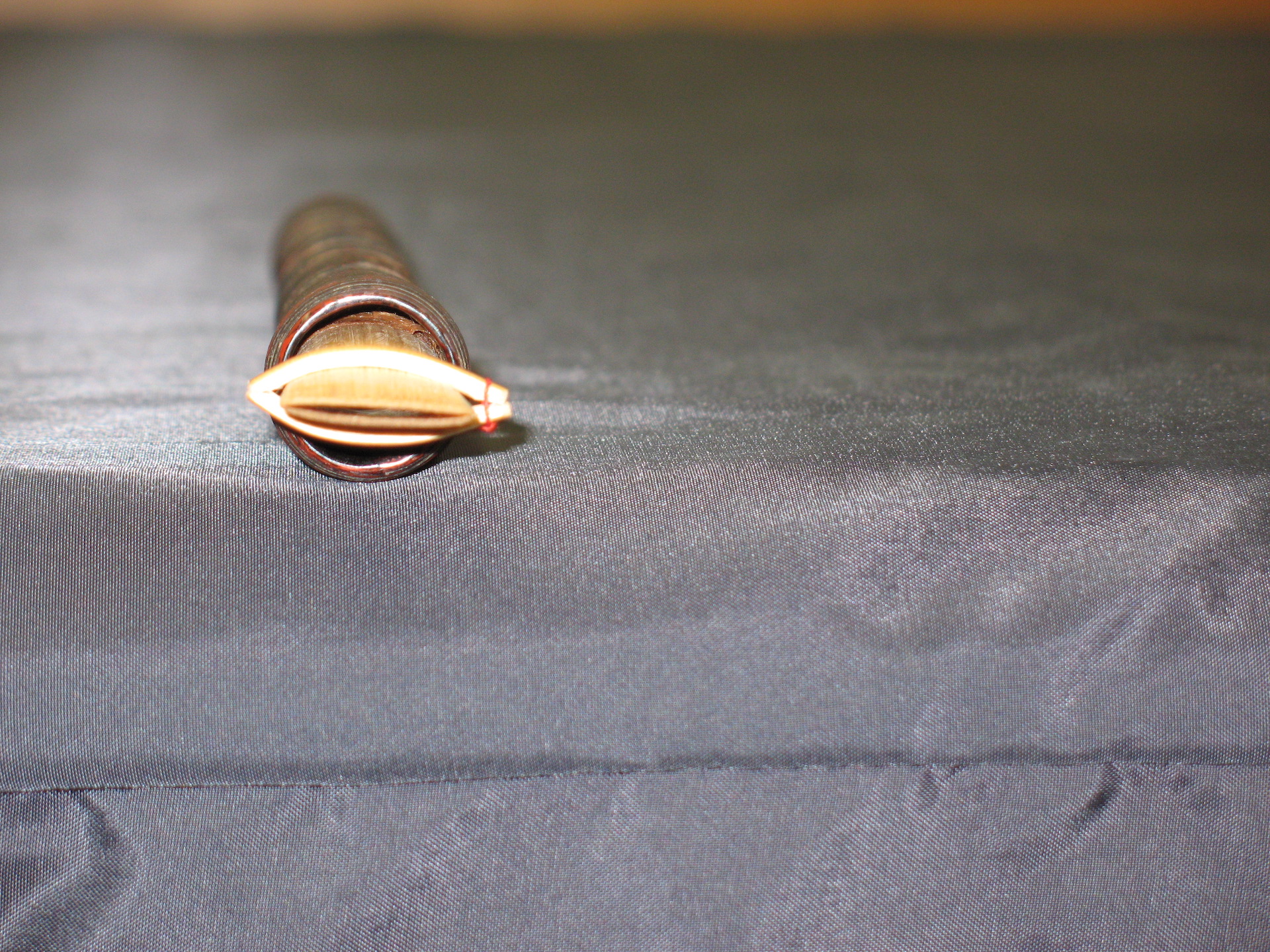 Hichiriki – Reed
Hichiriki – Reed
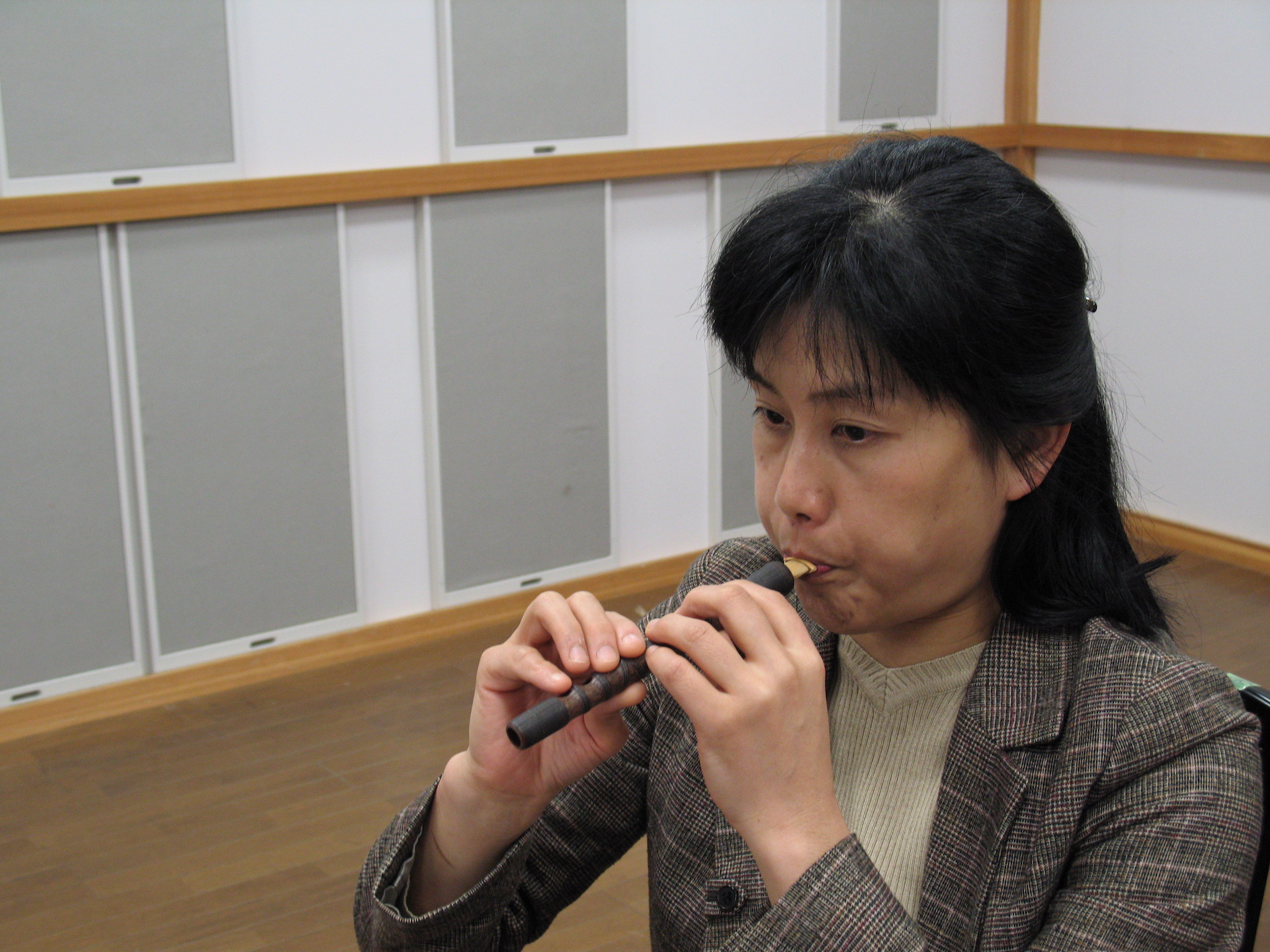 NAKAMURA Hitomi
Hichiriki - Embouchure
NAKAMURA Hitomi
Hichiriki - Embouchure
Figure 2
The reed is made from ashi (mountain bitter bamboo). It is set in the head of the instrument and secured by a ring made from a folded strip of wisteria bark. The reed, being relatively large, can easily influence the pitch of the pipe. Sliding notes and tonal variation obtained by producing the same pitch on different fingerings is a feature style and a characteristic of the sound from this beautiful instrument.
Tuning and transposition
The hichiriki, tuned to an A-430Hz, sounds one octave higher than written.
Range and fingerings
Pitches are playable by opening and closing the instrument’s nine holes with normal breathing. They are indicated as whole notes in Figure 3. The pitches shown in black are produced by a change of position of the reed in the mouth. By holding the reed deep in the mouth, a musician raises the pitch. For instance, the pitches on the second staff in Figure 3 are performed with the reed completely inserted into the performer’s mouth. On the other hand, the reed held in a shallow position lowers the pitch. Also weakening the lip pressure can lower the pitch a major second, while increasing it can raise the pitch up to a major sixth.
 Written range and fingerings for the hichiriki
Written range and fingerings for the hichiriki
Figure 3
The hichiriki’s sound is extremely rich across its entire range. Figure 4 shows the spectra of its lowest and highest notes: F4 and A5 (written F3 and A4) and played ff. The spectrum of the F4 (in blue) shows energy on up to 55 partials while the spectrum of the A5 shows energy to at least its 25th partial. The frequency of the 25th partial is about 21,500 Hz, beyond the frequency range of human hearing, whose boundaries are universally set to 20-20,000 Hz.
 Spectra of the hichiriki playing ff F4 (blue) and A5 (red)
Spectra of the hichiriki playing ff F4 (blue) and A5 (red)
Figure 4
Although the sound of the hichiriki is amazingly rich, it appears to have two weak frequency zones, one between C#8 and F8 (4343 - 5309Hz), and the other between E10 – G10 (10135 – 12066 Hz), as illustrated in Figure 5. These frequency zones correspond respectively to the 9th -11th (black arrows) and the 21st-25th partials (red arrows) of its B4, 482.65Hz.
 Two weaker frequency zones in the otherwise extremely rich spectrum of the hichiriki
Two weaker frequency zones in the otherwise extremely rich spectrum of the hichiriki
Figure 5
Traditional performance practices
- Articulation: Traditionally, tonguing is not used with Japanese wind instruments. Instead phrases are shaped by a control of the airflow. Selected pitches are accentuated by tapping the instrument’s holes with the fingers. It is typical for the starting pitch of a melodic line to be approached with a portamento from below.
- Osu: This is a decrescendo followed by a sudden re-attack of the pitch on a strong beat. The attack is not tongued but produced by an increase of the airflow.
- Tataku: This is the coloration of a sustained tone with a rapid insertion of its upper or lower neighboring tone. The change of fingering between the two pitches usually involves the rapidly closing and re-opening of a single hole and tapping the closing-hole, which accentuates the corresponding tone. This technique is available from the low A4 until the A5 (written A3 to A4).
| Osu | Tataku |

|
|
Example 1
- Mawasu: This melodic motion usually entails a change of fingerings on two holes. A pitch slowly slides one hole up to its upper neighboring tone opening, and then rapidly closing two holes to move to its lower neighboring tone. Tapping the holes accentuates the last tone. On the hichiriki, the motion of the reed inside a performer’s mouth can also produce this effect. In this case, the last tone is not accentuated.
| Fingered mawasu | Mawasu with the control of the reed |

|
|
Example 2
- Enbai: This is a sound caused by motion of the instrument in the performer’s mouth, with the reed held in a shallow position. It produces a glissando that can alter the pitch by intervals up to a perfect fourth. It is often used to color a sustained tone.
| Enbai | |

|
|
Example 3
Although the sound of the hichiriki is amazingly rich, it appears to have two weak frequency zones, one between C#8 and F8 (4343 - 5309Hz), and the other between E10 – G10 (10135 – 12066 Hz), as illustrated in Figure 5. These frequency zones correspond respectively to the 9th -11th (black arrows) and the 21st-25th partials (red arrows) of its B4, 482.65Hz.
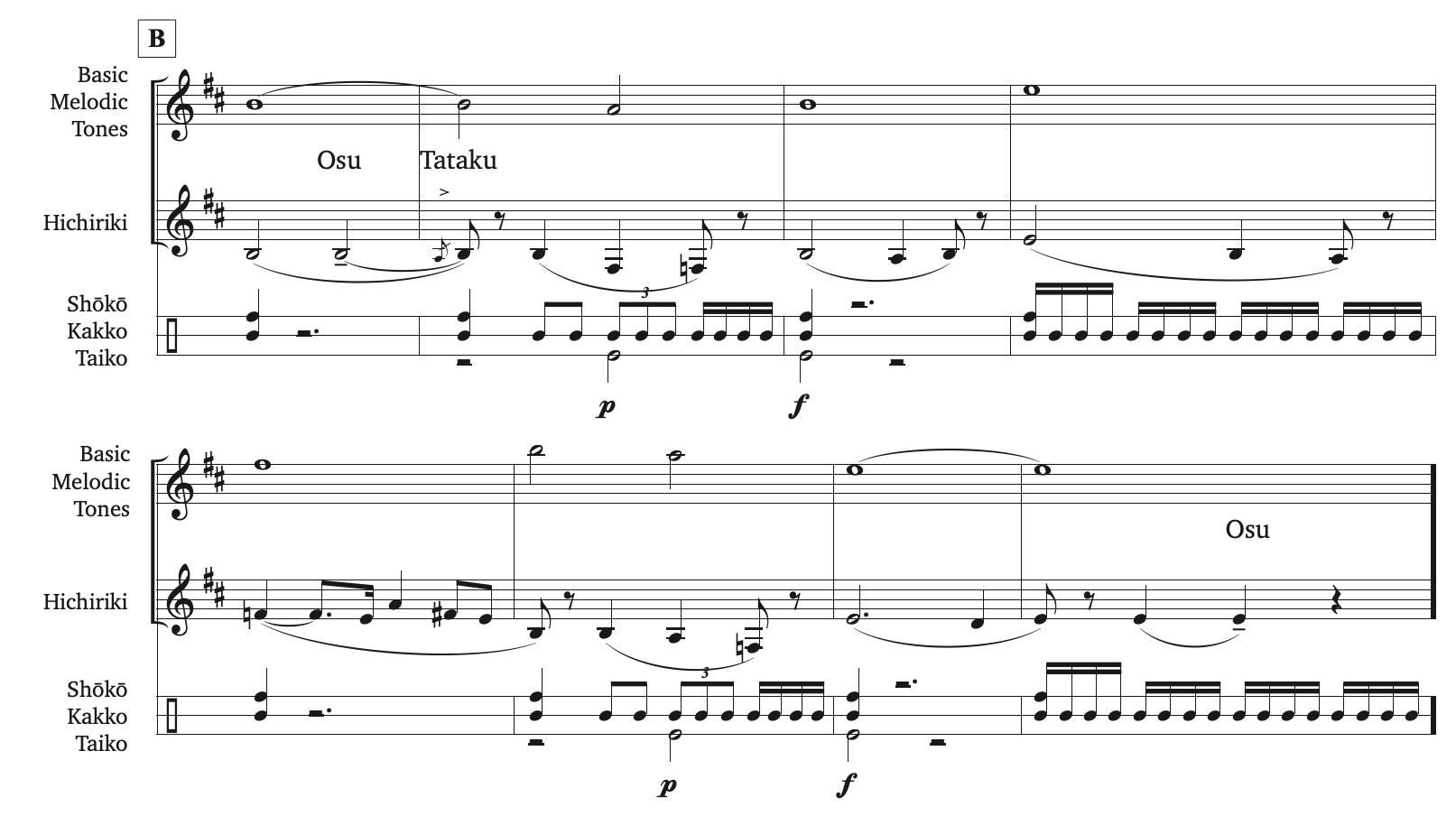
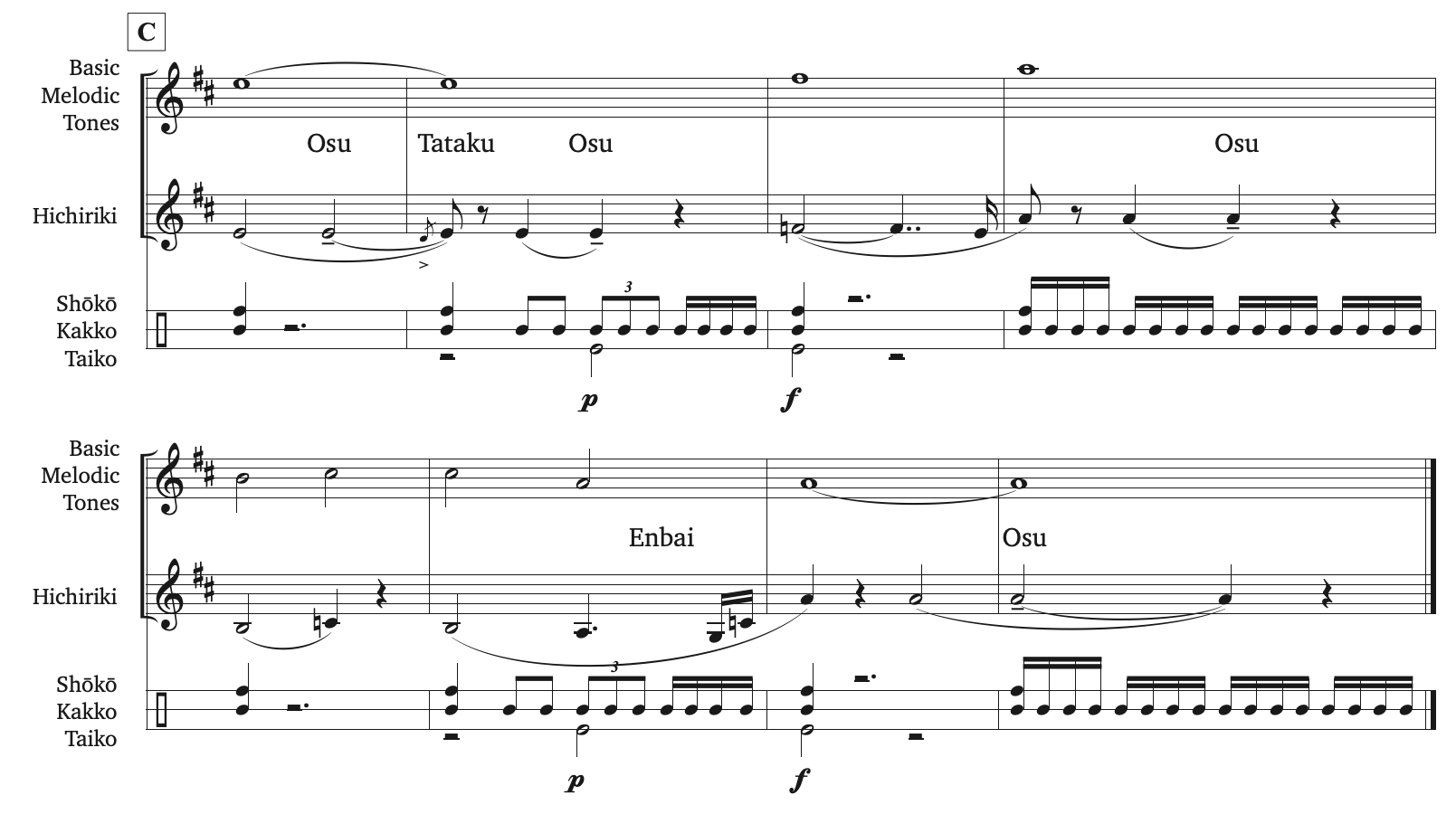 The basic melody of Etenraku's section B and C and how it is articulated by the hichiriki
The basic melody of Etenraku's section B and C and how it is articulated by the hichiriki
|
Example 4
New performance practices
- Articulation: Tonguing (including staccato) can be used, but best limited to single tonguing.
- Tremolo: The hichiriki does not traditionally use tremolo, but it can be utilized in new music. The rule of thumb is to use tremolo between two pitches that do not involve awkward fingerings, and for the most part, to limit it within the range of the perfect fourth.
Glissando and trills can be used independently or in combination as shown in Example 5.
| Glissando and trills |

|
Example 5
- Bisbigliando: An effect produced when slightly transforming the color of a tone. This is in fact traditionally part of the hichiriki modes of performance, since sliding notes and tonal variation obtained by producing the same pitch on different fingerings is a feature of its style.
- Singing while playing: This is possible, it is important to take into consideration the singing range of the performer. In Example 5, the squared-notes indicate sung pitches.
| Singing and playing | |

|
|
Example 6